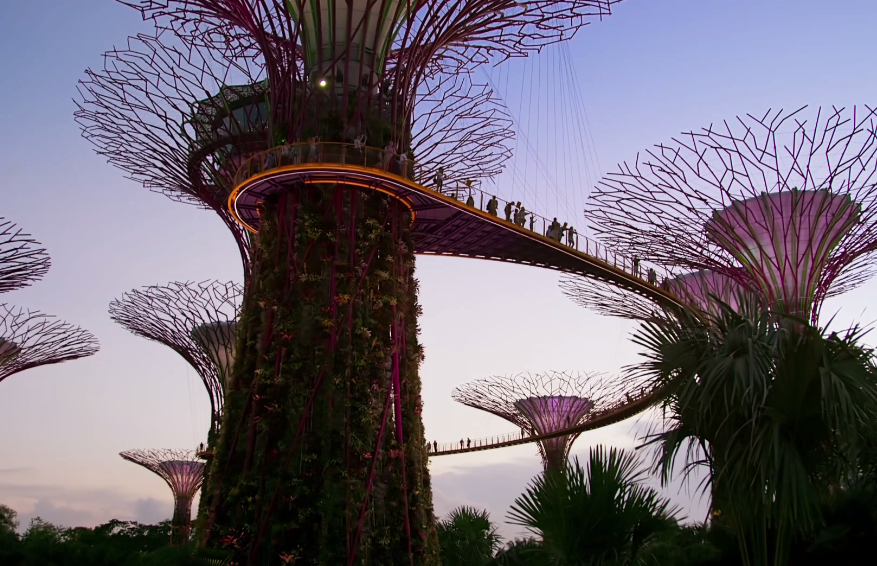(单词翻译:单击)
听力文本
There is one city where that idea is being applied on a major scale.
有一座城市正在大规模实践这个构想。
Singapore. Two million trees have been planted here in the last 45 years.
新加坡。这座城市在四十五年里共种了两百万棵树。
This city is now richer in species than any other in the world.
如今,它成为了世界上物种最丰富的城市。
And this practise extends to all parts of the city.
构建自然城市的实践延伸至城市的每个角落。
The waterways have been cleaned up, and smooth-coated otters are coming back.
城市中的航道被清理干净,江獭们得以重新回归。

But perhaps, the most spectacular example of city greening is this grove of super trees.
不过,城市绿化最壮观的例子也许是这片超级树林。
These 150 feet high metal structures are now full of life.
这些四十五米高的金属建筑现在充满了生机。
Creepers have been planted to grow over the outermost branches.
分枝上种植了匍匐植物,蔓延生长。
This is a new urban world that we have now designed and built with others in mind.
这种新型城市世界,在设计和建造时兼顾到了其他物种。
Create the space, and the animals will come.
只要创造出空间,动物就会栖息于此。
Is this a vision of our cities of the future?
这是否就是我们未来的城市景观呢?
视频及简介
城市的生长速度比地球上任何其他栖息地都要快。它们似乎不太可能成为动物茁壮成长的地方,但它们可能是一个充满意外机遇的世界。豹子在孟买的街道上徘徊,在纽约的摩天大楼里猎捕猎鹰,一百万椋鸟在罗马上空表演壮观的空中舞蹈。在焦特布尔,叶猴被尊为宗教神灵,在哈拉尔,当地人与野生鬣狗和睦相处。然而,许多动物在城市丛林中挣扎着应付。作为这个环境的建筑师,人类是否可以选择建造既为他们又为野生动物的家园?


